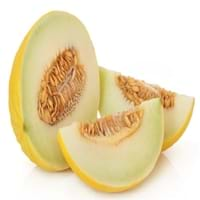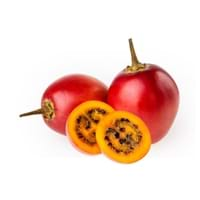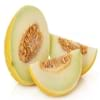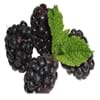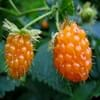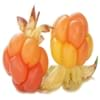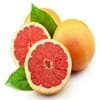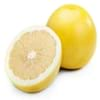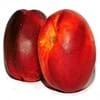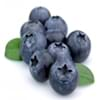Health Benefits
Body hydration, Cancer prevention, Gout treatment, Heart care, Treatment of skin Diseases
Cancer prevention, Improves eye vision, Prevents diabetes, Prevents high blood pressure
General Benefits
Body hydration, Controls blood pressure, Digestive aid, Eye care, Helps in weight loss, Improves eye vision, Maintains healthy cholesterol level, Strengthens bones
Cures inflamed tonsils, Helps in weight loss, Maintains healthy cholesterol level
Skin Benefits
Anti-aging benefits, Brightens and lightens complexion, Hydrates skin, Reduces wrinkles, Treatment of dark spots
Anti-aging benefits, Protects skin from oxidative stress
Hair Benefits
Prevents hair loss, Promotes longer and healthier hair, Protects hair
Protects hair
Allergy Symptoms
Abdominal cramps, Breathing difficulty, Coughing, Diarrhea, Hives, Hoarseness, Itching in eyes, Itching of mouth, Itching sensation in throat, Nasal congestion, Nausea, Skin rash, Wheezing
Anaphylaxis, Coughing, Diarrhea, Eczema, Hives, Itching sensation in throat, Nausea, Skin Rashes, Runny nose, Sneezing, Swelling of mouth, tongue or lips, Vomiting, Wheezing
Side Effects
Allergic reaction
Heart burn
Best Time to Eat
As a snack in the late afternoon, Don't consume at night and before bed, Eat the fresh ones, avoid mixing with any other foods, don't eat after meal., Morning time (before lunch)
Along with meal, As a snack in the late afternoon, Don't consume at night and before bed, Don't eat after meal, Morning time (before lunch)
Vitamin B5 (Pantothenic Acid)
Vitamin C (Ascorbic Acid)
Vitamin K (Phyllochinone)
Phytosterol
Not Available
Calories in Fresh Fruit with Peel
Not Available
Not Available
Calories in Fresh Fruit without Peel
Calories in Frozen Form
Not Available
Calories in Canned Form
Not Available
Type
Melon
Fruit vegetable
Season
All seasons
All seasons
Varieties
Green Flesh, Yellow Rind and Orange Flesh
Tamarillo bold gold, Tamarillo red beau, Tamarillo tango and Tamarillo teds red
Color
Green, Yellow
Orange, Red, Yellow
Inside Color
Light Green
Creamy Yellow
Origin
France
South Africa
Grows on
Not Available
Trees
Soil Type
Sandy loam, Well-drained
Sandy loam, Well-drained
Climatic Conditions
Warm
Rainfall, Warm
Facts about
- The average weight of honeydew melon is 6 pounds.
- 90% of a honeydew is water.
- In middle east countries, dried and roasted honeydew seeds are consumed as snacks.
- Honeydew melons can be 15-22 mm long.
- Up until 1967, tamarillos were referred to as tree tomatoes.
- The name tamarillo is derived from Maori word 'tama' which means leadership and rillo from spanish word 'amarillo' which means yellow.
Top Producer
China
New Zealand
Other Countries
Brazil, Egypt, India, Iran, Mexico, Morocco, Spain, Turkey, United States of America
Australia, Chile, Colombia, Malaysia, Peru, Philippines
Top Importer
Not Available
United States of America
Top Exporter
Not Available
New Zealand
Botanical Name
Cucumis melo
Solanum betaceum
Synonym
Not Available
tree tomato, genus Cyphomandra, Cyphomandra
Subkingdom
Tracheobionta
Tracheobionta
Division
Magnoliophyta
Magnoliophyta
Class
Magnoliopsida
Magnoliopsida
Subclass
Dillenhidae
Asteridae
Order
Cucurbitales
Solanales
Family
Cucurbitaceae
Solanaceae
Species
C. melo
Solanum betaceum
Generic Group
Gourd
Nightshade
Difference Between Honeydew and Tamarillo
We might think that Honeydew and Tamarillo are similar with respect to nutritional value and health benefits. But the nutrient content of both fruits is different. Honeydew and Tamarillo Facts such as their taste, shape, color, and size are also distinct. The difference between Honeydew and Tamarillo is explained here.
The amount of calories in 100 gm of fresh Honeydew and Tamarillo with peel is Not Available and Not Available and the amount of calories without peel is 36.00 kcal and 31.00 kcal respectively. Thus, Honeydew and Tamarillo belong to and category.These fruits might or might not differ with respect to their scientific classification. The order of Honeydew and Tamarillo is Cucurbitales and Solanales respectively. Honeydew belongs to Cucurbitaceae family and Tamarillo belongs to Solanaceae family. Honeydew belongs to Cucumis genus of C. melo species and Tamarillo belongs to Solanum genus of Solanum betaceum species. Beings plants, both fruits belong to Plantae Kingdom.
